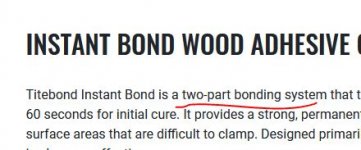Rick Herrick
Member
- Joined
- Feb 7, 2020
- Messages
- 814
ChuckM said:But as I said, most of my usual glue-ups are done on the Dubuque clamps -- no need to worry about glue spills. They're very strong...watch out for overclamping!
Chuck/Willy, I too will just focus on the wax paper method but I wanted more on these clamps above. I looked at them and they appear to have a notch in the rail as part of the ratcheting mechanism. How are glue spills avoided with these? I am missing something here.

